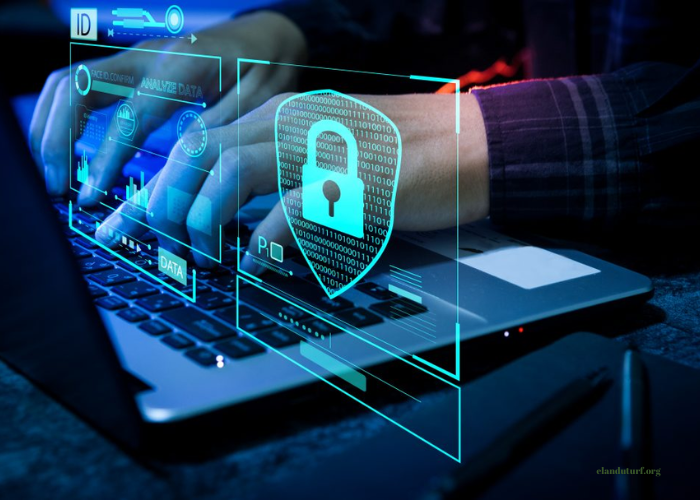In today’s hyper-connected world, where digital assets play a crucial role in personal and professional domains, the need for robust cybersecurity measures has never been more pressing. Cyber threats are evolving rapidly, with cybercriminals leveraging sophisticated techniques to exploit vulnerabilities in systems, networks, and human behavior. As individuals and organizations increasingly depend on technology, implementing cybersecurity best practices has become essential for safeguarding digital assets. This article delves into various strategies and practices that can help secure your digital environment.
Understanding Cybersecurity
Cybersecurity encompasses a wide array of practices, technologies, and processes designed to protect computers, networks, programs, and data from unauthorized access, damage, or theft. It is an ever-evolving field that requires constant vigilance and adaptation to new threats. The importance of cybersecurity can be underscored by the alarming statistics surrounding cybercrime; according to the Cybersecurity & Infrastructure Security Agency (CISA), the global cost of cybercrime is expected to reach $10.5 trillion annually by 2025.
Identifying Digital Assets
Before diving into best practices, it’s vital to understand what constitutes digital assets. Digital assets refer to any data or information that exists in a digital format and holds value. This can include:
- Personal Information: Name, address, Social Security number, financial data, etc.
- Intellectual Property: Trade secrets, patents, copyrighted material.
- Business Data: Customer information, employee records, proprietary technology.
- Digital Infrastructure: Servers, databases, websites, and applications.
Recognizing the value of these assets is the first step toward implementing effective cybersecurity measures.
Cybersecurity Best Practices
Conduct Regular Risk Assessments
A risk assessment is the foundation of a strong cybersecurity strategy. It involves identifying potential vulnerabilities in your digital environment and evaluating the likelihood and impact of various threats. Regular assessments help organizations and individuals understand their security posture and prioritize resources effectively. Key steps in a risk assessment include:
- Identifying Assets: Catalog all digital assets and their importance.
- Identifying Threats: Assess potential threats to each asset.
- Assessing Vulnerabilities: Identify weaknesses that could be exploited.
- Evaluating Impact: Determine the potential consequences of a breach.
Implement Strong Password Policies
Passwords are the first line of defense against unauthorized access. To strengthen password security:
- Use Complex Passwords: Create passwords that include a mix of uppercase and lowercase letters, numbers, and special characters.
- Avoid Common Passwords: Steer clear of easily guessable passwords like “123456” or “password.”
- Enable Two-Factor Authentication (2FA): Add an extra layer of security by requiring a second form of verification, such as a text message or authentication app.
- Regularly Update Passwords: Encourage users to change passwords frequently and avoid reusing old ones.
Educate Employees and Users
Human error remains one of the most significant threats to cybersecurity. Educating employees and users about cybersecurity best practices can significantly reduce risks. Training programs should cover:
- Phishing Awareness: Teach users to recognize phishing emails and suspicious links.
- Safe Browsing Practices: Instruct users on safe browsing habits and the risks associated with downloading files from untrusted sources.
- Incident Reporting: Establish clear protocols for reporting suspicious activity or potential breaches.
Keep Software Updated
Outdated software is a common vulnerability that cybercriminals exploit. To mitigate this risk:
- Enable Automatic Updates: Configure systems and applications to update automatically to ensure the latest security patches are applied promptly.
- Regularly Review Software: Periodically audit all software applications and remove those that are no longer in use.
- Upgrade Legacy Systems: Replace or upgrade outdated systems that may no longer receive security updates.
Use Firewalls and Antivirus Software
Firewalls and antivirus software act as critical barriers against malicious attacks:
- Install Firewalls: Ensure that both hardware and software firewalls are in place to monitor incoming and outgoing traffic and block unauthorized access.
- Deploy Antivirus Software: Use reputable antivirus software to detect and eliminate malware, spyware, and other threats.
- Conduct Regular Scans: Schedule regular scans to identify and remove potential threats.
Backup Data Regularly
Data loss can occur due to various reasons, including hardware failure, ransomware attacks, or accidental deletion. To safeguard against data loss:
- Implement a Backup Strategy: Establish a regular backup schedule to ensure data is backed up frequently.
- Use Multiple Backup Locations: Store backups in different physical locations and consider using cloud storage for redundancy.
- Test Backups: Regularly test backup restoration processes to ensure data can be recovered quickly in the event of a breach or data loss.
Secure Mobile Devices
With the rise of remote work and mobile technology, securing mobile devices is crucial. To enhance mobile security:
- Implement Mobile Device Management (MDM): Use MDM solutions to manage and secure devices remotely.
- Require Strong Passwords: Enforce strong password policies for all mobile devices.
- Enable Remote Wipe: Ensure that devices can be remotely wiped in case of theft or loss to protect sensitive data.
Restrict Access Control
Not all users need access to all data. Implementing strict access control measures can help minimize the risk of unauthorized access:
- Use Role-Based Access Control (RBAC): Grant access based on user roles and responsibilities, ensuring that individuals only have access to the information necessary for their job.
- Implement the Principle of Least Privilege (PoLP): Limit user permissions to the minimum necessary for their roles to reduce the potential impact of a breach.
- Regularly Review Access Rights: Periodically audit access rights and revoke permissions for users who no longer require access.
Develop an Incident Response Plan
Having a well-defined incident response plan can help organizations react quickly and effectively to a cybersecurity incident. Key elements of an incident response plan include:
- Identification: Procedures for identifying and assessing incidents.
- Containment: Strategies to contain the impact of an incident and prevent further damage.
- Eradication: Steps to eliminate the threat from the environment.
- Recovery: Processes for restoring systems and data to normal operations.
- Post-Incident Review: Conducting a review of the incident to identify lessons learned and improve future responses.
Monitor Networks Continuously
Continuous monitoring is vital for identifying potential threats before they escalate into significant incidents. This includes:
- Intrusion Detection Systems (IDS): Deploy IDS solutions to detect unauthorized access attempts and anomalies.
- Log Analysis: Regularly review logs for unusual activities or patterns that may indicate a breach.
- Network Segmentation: Implement segmentation strategies to limit the spread of a breach within the network.
Conclusion
As our reliance on technology continues to grow, so do the threats posed by cybercriminals. Adopting cybersecurity best practices is essential for protecting digital assets and ensuring the integrity, confidentiality, and availability of data. By implementing strategies such as risk assessments, strong password policies, employee education, and incident response planning, individuals and organizations can significantly reduce their risk exposure and safeguard their digital environment. Remember, cybersecurity is not a one-time effort but an ongoing commitment to adapt and respond to the ever-changing threat landscape. In this digital age, staying informed and proactive is the key to successful cybersecurity management.







